“S&P”: Azərbaycan hökuməti islahatları davam etdirərsə, reytinq yüksəldilə bilər
Azərbaycanın kredit reytinqini “BB+/B” səviyyəsində təsdiqləyib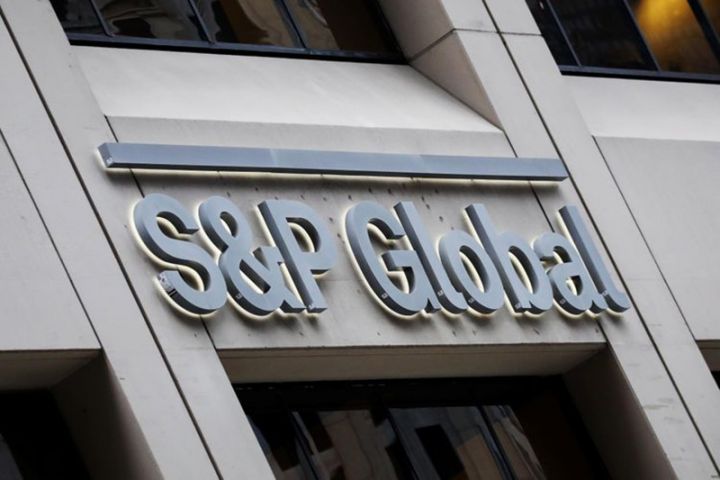
“S&P Global Ratings” beynəlxalq reytinq agentliyi Azərbaycanın xarici və milli valyutada uzunmüddətli və qısamüddətli suveren kredit reytinqlərini “BB+/B” səviyyəsində təsdiqləyib.
Reytinqlərin proqnozu “sabit”dir.
Qeyd edək ki, reytinqlər agentliyin əlverişli karbohidrogen qiymətləri və artan qaz ixracının 2022-2023-cü illərdə Azərbaycanın maliyyə vəziyyətini və tədiyyə balansını dəstəkləyəcəyini, habelə Ukraynadakı vəziyyətin Azərbaycan üçün mənfi nəticələrinin məhdud olaraq qalacağı ilə bağlı gözləntilərini əks etdirir.
Agentlik qeyd edib ki, yataqlar köhnəldikcə neft hasilatının gözlənildiyindən daha tez azalacağı təqdirdə reytinqlər aşağı salına bilər. Bildirilib ki, hökumət bəzi struktur maneələri aradan qaldırmaq üçün islahatları davam etdirərsə, əksinə, reytinq yüksəldilə bilər.
Azerbaijan Ratings Affirmed At 'BB+/B'; Outlook Stable
Overview
-We project Azerbaijan will run sizable twin surpluses over 2022-2023, supported by currently favorable prices for oil, its key export item.
-Nevertheless, the country's oil fields are ageing and production is on a declining trend, which new gas exports are unlikely to fully offset.
-Over the medium to long term, this could weigh on Azerbaijan's growth, fiscal, and balance-of-payments performance.
-Significant liquid assets, accumulated within sovereign wealth fund State Oil Fund of the Republic of Azerbaijan, partially mitigate these risks.
-We affirmed our 'BB+/B' long- and short-term sovereign credit ratings on Azerbaijan. The outlook is stable.
Rating Action
On July 22, 2022, S&P Global Ratings affirmed its 'BB+/B' long- and short-term foreign and local currency sovereign credit ratings on Azerbaijan. The outlook is stable.
Outlook
The stable outlook reflects our expectation that favorable hydrocarbon prices and rising gas exports will support Azerbaijan's fiscal and balance-of-payments positions over 2022-2023. It is also based on the assumption that there is no return to open military confrontation with Armenia, while the negative repercussions of the Russia-Ukraine war remain limited for Azerbaijan.
Downside scenario
We could lower the ratings if Azerbaijan's fiscal balances prove weaker than we currently expect over the medium term. This could happen, for example, because ageing oil fields result in oil production declining faster than expected. Reduced hydrocarbon revenue could also weigh on Azerbaijan's broader economic prospects, with real per capita GDP growth falling further below that of peers at a similar level of economic development. In addition, ratings pressure could build if the military confrontation with Armenia sharply escalates again, but this is not our baseline scenario.
Upside scenario
Conversely, we could consider an upgrade if higher external surpluses are sustained for longer than expected, resulting in sizable external asset accumulation. Ratings upside could also build if the government implements reforms addressing some of Azerbaijan's structural impediments, including constraints to monetary policy effectiveness stemming from elevated resident deposit dollarization and a still-weak domestic banking system.
Rationale
Of the sovereigns we rate in the 'BB' category, we consider Azerbaijan's fiscal and external stock positions among the strongest. The government has accumulated substantial liquid assets, mainly within sovereign wealth fund State Oil Fund of the Republic of Azerbaijan (SOFAZ). We forecast that the government will have access to liquid assets of close to 60% of GDP through 2025 and that general government debt will remain at about 20% of GDP. In addition to strong stock positions, currently favorable oil prices also support Azerbaijan's fiscal and balance-of-payments performance.
Our ratings on Azerbaijan remain constrained by weak institutional effectiveness, the country's narrow and concentrated economic base, and limited monetary policy flexibility.
Institutional and economic profile: Stronger near-term outlook but the economy is facing a long-term structural decline in oil production
We forecast Azerbaijan's economy will expand 3.5% in 2022 following a strong 5.6% recovery in 2021.
However, medium-term growth prospects are weaker--averaging 1.3% annually over 2023-2025--amid declining oil production due to ageing fields that will likely be only partially offset by rising gas exports.
Azerbaijan's institutional environment remains relatively weak and political power is centralized in the presidential administration.
Azerbaijan's economy is significantly dependent on the hydrocarbon sector, which is currently benefiting from favorable global oil prices. Oil and gas constitute almost 90% of exports and amount to about 50% of GDP. We now project that favorable terms of trade will persist for Azerbaijan over the rest of 2022 and in 2023. We expect that the Brent oil price will average $102 per barrel (/bbl) in 2022, $85/bbl in 2023, and $55/bbl in 2024-2025. In parallel, the OPEC+ group of countries (of which Azerbaijan is a member) has continued to taper back oil production quotas, in line with the agreement reached in July 2021.
In our view, the present environment will benefit Azerbaijan's economic, fiscal, and balance-of-payments performance. However, the longer-term outlook appears less favorable. Azerbaijan is one of the oldest oil producers in the world having started industrial oil production in the 19th century. Existing oilfields are ageing and experiencing continued production declines. Between 2010 and 2021, for instance, oil production dropped by 30% to an estimated 0.74 million barrels per day (mbpd) from over 1 mbpd.
Oil production continued to decline over the first four months of 2022, dropping 4.5% in year-on-year terms and averaging close to 0.72 mbpd. We understand that this has been spurred by natural reductions in output as oil fields age but also some technical and possibly temporary factors. As a result, Azerbaijan's production has been below its OPEC+ quotas for the past few months. We forecast the country's oil production will remain at 0.72 mbpd on average in 2022 and about that level over 2023-2025.
In contrast to oil, the outlook is stronger for Azerbaijan's gas sector. Production at the new Shah Deniz II (SDII) gas field commenced in 2018 and the two related pipelines, the Trans-Anatolian Natural Gas Pipeline (TANAP) and Trans Adriatic Pipeline (TAP), carrying gas to Turkey and Europe respectively, became operational in 2019-2020. Consequently, between 2017 and 2021, Azerbaijan's gas production rose by 80% and is set to increase another 13% through 2025, according to official plans.
Nevertheless, even considering this recent production ramp-up, we expect gas exports will play a relatively modest role in Azerbaijan's economy, accounting for about 20% of hydrocarbon exports compared with close to 80% for oil over the medium term.
Azerbaijan's non-oil sector has exhibited strong growth so far in 2022, up 9.6% year-on-year through June. The favorable trend has been fairly broad-based in terms of sub-sectors with transportation (34% growth), IT (14%), and industrial production (11.5%) all exhibiting strong dynamics. That said, we expect momentum to slow through the rest of this year, partly due to base effects but also as elevated inflation is likely to drag on consumption growth momentum. Beyond 2022, we also do not expect high growth rates in the non-oil sector to be sustained, given only limited progress in economic diversification and structural reforms in recent years.
Although it presents several uncertainties, beyond the oil price channel, the Russia-Ukraine conflict's effects on Azerbaijan's economy appear contained so far. Russia is Azerbaijan's largest trade partner on the import side, accounting for 20% of total goods imports, out of which wheat is the largest single item. Before the war, Ukraine contributed 4.5% of imports. Even though the conflict has contributed to higher inflation, including for food, there do not currently appear to be broader implications for Azerbaijan, such as widespread supply chain disruptions or unavailability of some goods. There is some anecdotal evidence of Russian citizens relocating to Azerbaijan or moving their funds, but the macroeconomic effect of this is insubstantial so far.
Overall, we project economic growth of 3.5% for 2022 following a 5.6% rebound in 2021, which mostly reflects increasing gas production, the recovering non-oil sector, and a slight decline in oil production. We expect growth will average just over 1% over 2023-2025 as new gas capacity only partially compensates for the gradual oil sector decline.
In our opinion, Azerbaijan's institutions remain relatively weak. They are characterized by highly centralized decision-making and lack transparency, which can make policy responses difficult to predict. Political power remains concentrated with the president and his administration, and there are limited checks and balances. In our view, structural reforms and economic diversification efforts have yielded only limited results in recent years.
We also consider that Azerbaijan continues to suffer from material gaps in reported data. For instance, there is no real national income accounts data available broken down by expenditure. Although sovereign wealth fund SOFAZ provides a detailed and timely disclosure of its asset composition, there is no international investment position data available for the economy overall.
Following a six-week-long war in Nagorno-Karabakh that broke out in September 2020, Azerbaijan and Armenia agreed to a Russia-brokered ceasefire that took effect on Nov. 10, 2020. Our baseline expectation is that the ceasefire will broadly hold, supported by Russia's peacekeeping operations. That said, several ceasefire violations and skirmishes have taken place at the border in recent months.
Flexibility and performance profile: Sizable assets accumulated within SOFAZ are a key support to the sovereign ratings
We project Azerbaijan will post 6% of GDP general government and 24% of GDP current account surpluses in 2022--a significant upward revision compared to our previous forecasts.
In our view, Azerbaijan will retain an average general government net asset position of around 40% of GDP through 2025.
Monetary policy effectiveness remains limited, constrained by the central bank's limited operational independence, elevated dollarization, and underdeveloped local currency capital markets.
Based on our 2022 Brent oil price forecast of $102/bbl and projected oil production of an average of 0.72 mbpd (a 2.5% year-on-year decline as oil fields age), we expect a current account surplus of almost 24% of GDP in 2022, following a 15% of GDP surplus in 2021. We also estimate that Azerbaijan will run the highest current account surplus in over a decade this year.
The launch of the SDII gas project in 2018 and its further expansion over the next three-to-four years should also support Azerbaijan's external performance. However, this is moderated by our projections of stagnating oil production over the medium term, while imports rebound as domestic consumption recovers and the authorities deliver on planned reconstruction activities in Nagorno-Karabakh. Combined with our assumption that oil prices will decline to $55/bbl in 2024, Azerbaijan's current account surpluses will turn into deficits toward the end of the four-year forecast horizon.
Nevertheless, Azerbaijan's strong external stock position will remain a core rating strength, reinforced by the large amount of foreign assets accumulated at SOFAZ. We estimate that external liquid assets will surpass external debt through 2025. Although Azerbaijan remains vulnerable to potential terms-of-trade volatility, we consider that its large net external asset position will serve as a buffer that could mitigate the potential adverse effects of economic cycles on domestic economic development.
Azerbaijan's fiscal asset position remains strong, mirroring its external position and supporting the sovereign rating. Despite the budgeted 2021 deficit, Azerbaijan posted a full-year general government surplus of 6.6% of GDP. In 2021, the general government balance improved as terms of trade proved more favorable than in 2020, while expenditure was under-executed--a frequent occurrence in Azerbaijan.
We now forecast a 6% of GDP general government surplus for 2022, an upward revision from our previous projection of 3% of GDP, almost entirely reflecting more favorable oil price dynamics. The 2022 budget was revised in July with the oil price now assumed at $85/bbl (versus $50/bbl previously) and an increase in capital expenditure (capex), allowed by better revenue outturns. Based on the latest budget revision, overall government spending is set to rise over 20% in nominal terms versus the actual outturn in 2021, as social expenditure and public sector wages are increasing in addition to capex. Nevertheless, we note that Azerbaijan tends to underspend, so the actual full-year outcome will likely prove more modest.
We expect the net general government asset position will remain about 40% of GDP through 2025. In calculating net general government debt, we consider our estimate of SOFAZ's external liquid assets. We exclude exposures equivalent to about 20% of 2021 GDP that we consider harder to liquidate quickly if needed, such as the fund's domestic investments and certain equity exposures abroad. Azerbaijan is far more transparent than many of its peers (such as those in the Gulf Cooperation Council) with regards to the composition of the assets and size of the sovereign wealth fund. For example, SOFAZ publishes detailed audited annual reports with granular information on the categories of investments held by the fund.
The government owns a majority stake in the International Bank of Azerbaijan (IBA) and in 2017 restructured the bank and directly assumed some of its debt. The government has also transferred IBA's nonperforming loans, at a book value of about Azerbaijani manat (AZN) 10 billion, to AqrarKredit, a state-owned nonbanking credit organization funded by the Central Bank of Azerbaijan, with a sovereign guarantee. We include AqrarKredit's sovereign guaranteed loans of AZN9.5 billion in general government debt.
We assume Azerbaijan will retain the manat's de facto peg to the U.S. dollar at AZN1.7 to $1, supported by the authorities' regular interventions in the foreign currency market. Nevertheless, in our view, should hydrocarbon prices drop sharply and remain low for a prolonged period, the authorities could consider allowing the exchange rate to adjust. This would help avoid a substantial loss of foreign currency buffers similar to that experienced by the central bank in 2015.
Like most other emerging and advanced economies, Azerbaijan's inflation has continued to exceed our previous forecasts, surpassing levels exhibited over 2016-2017, when prices rose significantly following the 2015 manat devaluation. Current upward price pressures are driven by the effects of post-pandemic reopening, food price inflation, and global trends given that Azerbaijan imports a wide range of goods from abroad and is significantly affected by foreign inflation developments. We now forecast inflation will average 13% in 2022 before gradually slowing to 5% through 2025.
We consider Azerbaijan's banking system to be stable with overdue loans continuing on a downward trend and reaching 3.6% in May 2022, although the large shadow economy makes it difficult to assess true underlying asset quality. The financial sector remains small with total assets of under 50% of GDP, which limits possible contingent liability risks for the government. Nevertheless, Azerbaijan's banking system is characterized by several persisting structural vulnerabilities, including the still high levels of dollarization, weak governance and transparency in an international context, and relaxed lending and underwriting standards. For more details on Azerbaijan's banking sector see "Banking Industry Country Risk Assessment: Azerbaijan," published July 30, 2021.
İllik 13.99%-dən 30 000 AZN-dək zaminsiz komissiyasız kredit!
© APA, spglobal
Müştərilərin xəbərləri
SON XƏBƏRLƏR
- 1 həftə sonra
- 1 həftə sonra
- 3 gün sonra
-

-
6 saat əvvəl
Birbank-la NFC ödənişləri tezliklə “Baku Bus”da: SINAQ mərhələsi başladı
-
1 gün əvvəl
"Top" tamamilə Kiyev və onun Avropa sponsorlarının tərəfindədir"
- 1 gün əvvəl
- 1 gün əvvəl
-
1 gün əvvəl
Cahan Şirkətlər Qrupuna daxil olan "Enna" şirkəti "Dayaq" mükafatına layiq görülüb
-
1 gün əvvəl
Nərimanovda premium mənzil arzulayanlar üçün 36 ayadək faizsiz kredit təklifi davam edir
-
1 gün əvvəl
“Naxtel” abunəçilərinin digər mobil operatorlara miqrasiyası uğurla tamamlanıb
-
1 gün əvvəl
Şikayətlərin yarıya yaxını internet və telefon rabitəsi xidmətlərilə bağlı olub
- 1 gün əvvəl
Son Xəbərlər

Biznesiniz üçün QISA NÖMRƏ (Ulduz nömrə) alın

Azərbaycanda Vakansiyalar - Azvak.az

Ödənişsiz investisiya seminarı: Yatırımda təcrübə qazan

Dolların bazar ertəsi üçün rəsmi məzənnəsi müəyyən olunub

Nərimanovda premium mənzil arzulayanlar üçün 36 ayadək faizsiz kredit təklifi davam edir
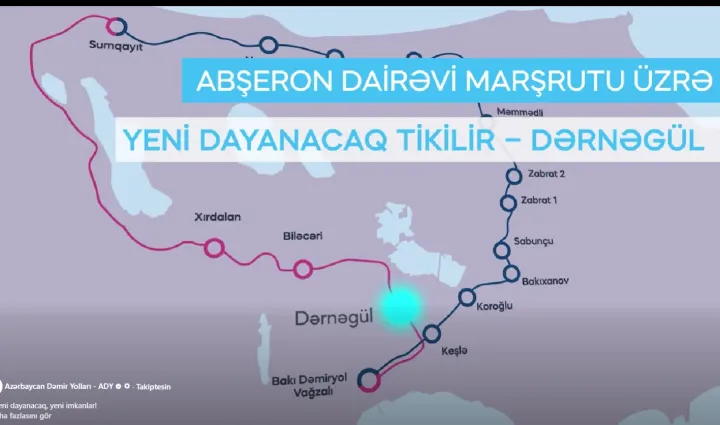
Azərbaycan Dəmir Yolları "Dərnəgül" dayanacağını tikir

Vəhşi heyvan hücumları ilə bağlı fermerlərə çağırış edildi

"Balıq ehtiyatlarının bərpası üçün Xəzərə və daxili su hövzələrinə 17-35 milyon ədəd körpə balıq buraxmağa ehtiyac var"

10 illik proqramı 3 ilə mənimsəmək imkanı - VİDEO+FOTO

Ucuz təbii qaz Avropanın sənaye böhranını həll etmədi
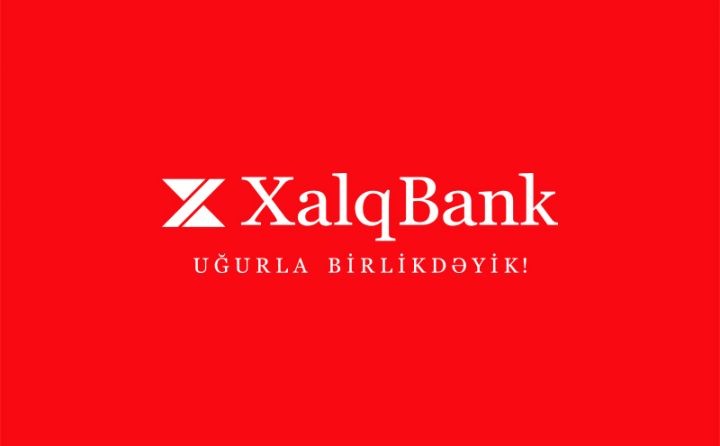

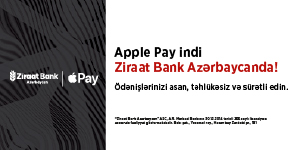










.jpg)
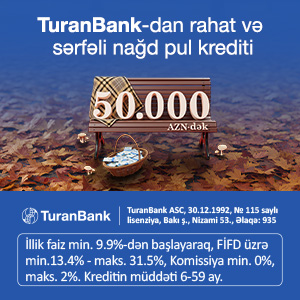
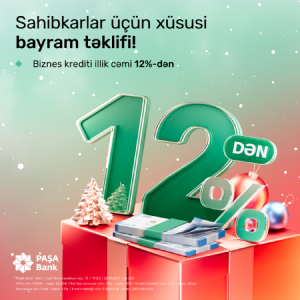





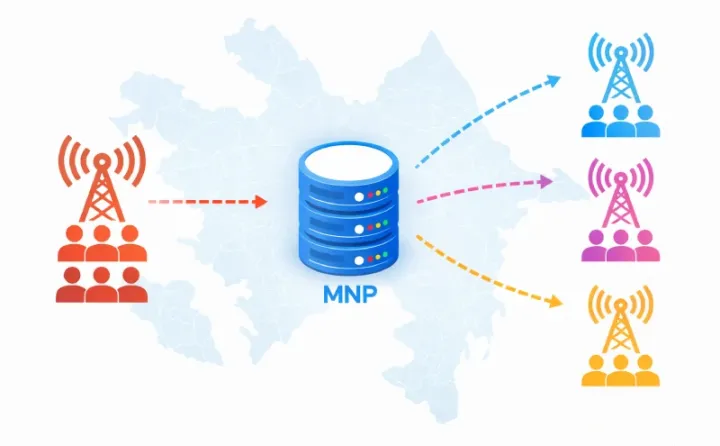


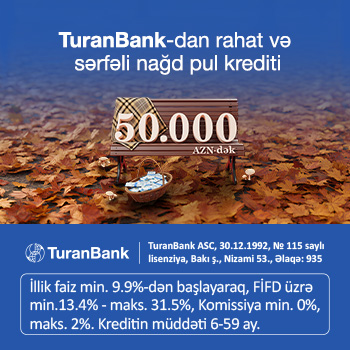
.jpg)

